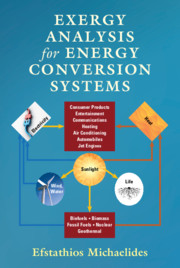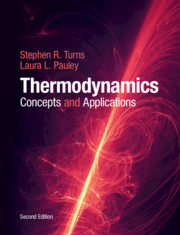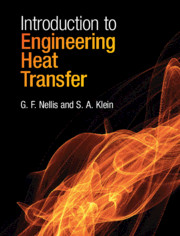Refine search
Actions for selected content:
5471 results in Thermal-fluids engineering
7 - Optimization and Exergoeconomics
-
- Book:
- Exergy Analysis for Energy Conversion Systems
- Published online:
- 19 March 2021
- Print publication:
- 08 April 2021, pp 273-295
-
- Chapter
- Export citation
Index
-
- Book:
- Exergy Analysis for Energy Conversion Systems
- Published online:
- 19 March 2021
- Print publication:
- 08 April 2021, pp 296-298
-
- Chapter
- Export citation
Contents
-
- Book:
- Exergy Analysis for Energy Conversion Systems
- Published online:
- 19 March 2021
- Print publication:
- 08 April 2021, pp vii-ix
-
- Chapter
- Export citation
5 - Exergy in Biological Systems
-
- Book:
- Exergy Analysis for Energy Conversion Systems
- Published online:
- 19 March 2021
- Print publication:
- 08 April 2021, pp 201-250
-
- Chapter
- Export citation
Dedication
-
- Book:
- Exergy Analysis for Energy Conversion Systems
- Published online:
- 19 March 2021
- Print publication:
- 08 April 2021, pp v-vi
-
- Chapter
- Export citation
4 - Exergy Consumption and Conservation
-
- Book:
- Exergy Analysis for Energy Conversion Systems
- Published online:
- 19 March 2021
- Print publication:
- 08 April 2021, pp 147-200
-
- Chapter
- Export citation
Symbols
-
- Book:
- Exergy Analysis for Energy Conversion Systems
- Published online:
- 19 March 2021
- Print publication:
- 08 April 2021, pp xiii-xvi
-
- Chapter
- Export citation
Preface
-
- Book:
- Exergy Analysis for Energy Conversion Systems
- Published online:
- 19 March 2021
- Print publication:
- 08 April 2021, pp xi-xii
-
- Chapter
- Export citation
About the Author
-
- Book:
- Exergy Analysis for Energy Conversion Systems
- Published online:
- 19 March 2021
- Print publication:
- 08 April 2021, pp x-x
-
- Chapter
- Export citation
6 - Ecosystems, the Environment, and Sustainability
-
- Book:
- Exergy Analysis for Energy Conversion Systems
- Published online:
- 19 March 2021
- Print publication:
- 08 April 2021, pp 251-272
-
- Chapter
- Export citation
Abbreviations
-
- Book:
- Exergy Analysis for Energy Conversion Systems
- Published online:
- 19 March 2021
- Print publication:
- 08 April 2021, pp xvii-xviii
-
- Chapter
- Export citation

Exergy Analysis for Energy Conversion Systems
-
- Published online:
- 19 March 2021
- Print publication:
- 08 April 2021

Thermodynamics
- Concepts and Applications
-
- Published online:
- 30 November 2020
- Print publication:
- 27 February 2020
-
- Textbook
- Export citation

Introduction to Engineering Heat Transfer
-
- Published online:
- 24 November 2020
- Print publication:
- 30 July 2020
-
- Textbook
- Export citation
Author Index
-
- Book:
- A Gallery of Combustion and Fire
- Published online:
- 17 June 2020
- Print publication:
- 03 September 2020, pp 176-178
-
- Chapter
- Export citation
6 - Fires
-
-
- Book:
- A Gallery of Combustion and Fire
- Published online:
- 17 June 2020
- Print publication:
- 03 September 2020, pp 140-175
-
- Chapter
- Export citation
3 - Internal Combustion Engines and Gas Turbines
-
-
- Book:
- A Gallery of Combustion and Fire
- Published online:
- 17 June 2020
- Print publication:
- 03 September 2020, pp 55-73
-
- Chapter
- Export citation
Introduction
-
-
- Book:
- A Gallery of Combustion and Fire
- Published online:
- 17 June 2020
- Print publication:
- 03 September 2020, pp 1-3
-
- Chapter
- Export citation
Contents
-
- Book:
- A Gallery of Combustion and Fire
- Published online:
- 17 June 2020
- Print publication:
- 03 September 2020, pp v-vi
-
- Chapter
- Export citation
4 - Low-Gravity Flames
-
-
- Book:
- A Gallery of Combustion and Fire
- Published online:
- 17 June 2020
- Print publication:
- 03 September 2020, pp 74-106
-
- Chapter
- Export citation
